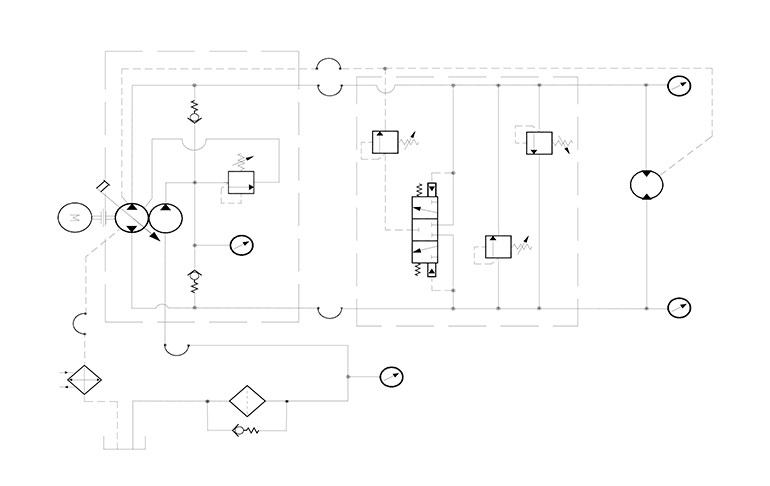Updated September 6, 2023 with the solution
By Robert J. Sheaf, Founder CFC Industrial
The attached circuit was a standard and is still used by some manufacturers that build concrete trucks. It is a simple and inexpensive circuit compared to the latest technology available using pressure-compensated, load-sensing pumps and pressure filters on the charge pump outlet.

A concrete supplier had a small fleet of older concrete trucks that used the attached circuit shown. His recent problem came when the drum on one of the trucks would not rotate in the direction needed to dispense the mixed concrete. From his experience with past problems, he would check the charge circuit pressure in neutral and compare it to turning the drum. It should drop about 50 to 60 psi, indicating the hot oil shuttle relief was working. He then exchanged the two circuit relief valves and switched the two pilot circuit check valves. Everything still seemed to be fine. He then removed the hot oil shuttle valve and did not see anything visible that could be causing the problem.
He then assumed the pump controls must be faulty and sent it to a repair house who advised him that there was nothing wrong with the pump or its controller.
Can you identify what was the problem? We welcome responses of all kinds directly to Robert Sheaf at rjsheaf@cfc-solar.com or to mgannon@wtwhmedia.com. The solution will be provided in conjunction with our August 2023 issue.
Solution
Visually inspecting screw-in type cartridges for obvious problems works fine if you find a piece of debris or can shift the spool. Unfortunately, the shuttle needs pilot pressure to shift in either direction, but this one could not be manually shifted. The concrete truck supplier got the idea to switch the cartridge with one from a good-running truck and found that the shuttle was stuck to one side, which was causing the problem position.
Filed Under: Components Oil Coolers, News, Pumps & Motors